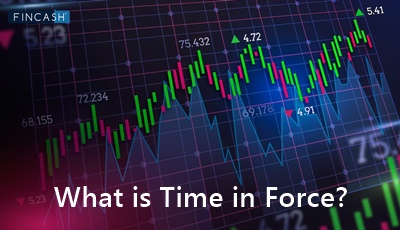
Table of Contents
Defining Time in Force
When placing a trade, a particular instruction known as "time in force" is used to specify how long the order will be active before it is executed or expires. These options are especially crucial for active traders because they enable them to be more specific concerning time constraints.

Day orders and Immediate-or-Cancel (IOC) are frequent instances.
Time in Force Orders
Active traders can prevent unintentional trade executions by using time-in-force orders. They can avoid forgetting to cancel previous trades by setting time constraints. Unintentional transaction executions can be particularly expensive when the Market is volatile and prices change quickly. Most active traders establish a time-in-force option to regulate how long the order remains open and employ limit orders to limit the price they pay for an asset. Even though day orders are the most frequent order type, there are many situations where using other order types makes sense.
Traders can employ several different forms of time-in-force orders. Few order types are available from some brokers, but active traders frequently have more alternatives. These orders are commonly referred to by acronyms like GTC, DAY, IOC, OPC, DTC, and GTD, among brokers. Below, we take a closer look at various order kinds.
What Time in Force to Use?
You can incorporate time-in-force orders in your investment strategy in various ways. You could pick one of the following possibilities, for instance:
Day-only Order (DAY)
This buy/sell order is only valid for the current day's trading session. Day orders are automatically cancelled if they are not filled at the end of the trading day. If you wish to trade an asset at a specific price without keeping track of its price throughout the trading day, day-only orders can be helpful.
Fill or Kill Order (FOK)
It has essentially two outcomes: either the entire order is filled right away, or it is cancelled. If you trade more frequently or actively, you might utilize this form of time-in-force order. Instead of purchasing shares of the same security at different prices, this order will assist you in completing a larger trade at a specified price point.
Talk to our investment specialist
Until Canceled Order (GTC)
With this kind of order, you can tell your broker to purchase or sell assets at a predetermined price up until the time you specify the order should expire. You may be given a window by your brokerage of up to 90 days to execute or cancel these orders. If you wish to wait for a certain price on security before making a deal, you can use this kind of time-in-force order. You can cancel the order or let it expire if the security never reaches that price.
Immediate or Cancel Order (IOC)
It is identical to Fill or kill orders are similar with one important exception. The order must be cancelled if the complete order can't be filled straight away while using fill or kill. Orders that can be filled quickly fall under immediate or cancelled orders. Then, any unissued shares would be cancelled.
Good till Date Orders (GTD)
They enable you to set a certain date for an order's execution or let it expire. As opposed to good until cancelled orders, this gives you more assurance about when the order will expire. Your broker may outline the time-in-force orders you can set if you are day trading using an online brokerage.
Time in Force Example
John predicts that the price of the Rs. 10 stock ABC will increase, but it will take some time—roughly three months. He places a Good 'Til Cancelled (GTC) order and buys Rs. 15 strike price ABC Call options. He set a three-month time restriction to prevent it from being put on hold indefinitely. After three months, the price of stock ABC is still unable to surpass Rs. 12. John's order is automatically cancelled.
The Bottom Line
Whichever period in force orders you choose to use, the goal will remain the same - to let you monitor the markets rather than forcing you to concentrate on your trading activity. By giving trades certain end dates, you can avoid worrying about trades completed outside the time limits you select. This can be useful if you trade actively and keep tabs on several stocks' daily moves.
All efforts have been made to ensure the information provided here is accurate. However, no guarantees are made regarding correctness of data. Please verify with scheme information document before making any investment.











